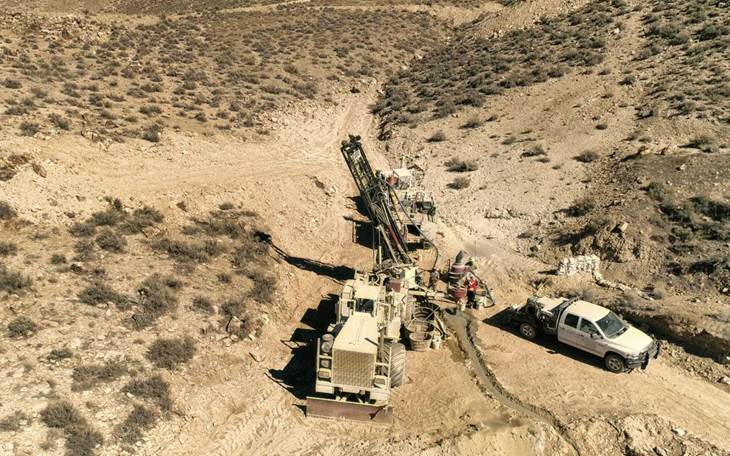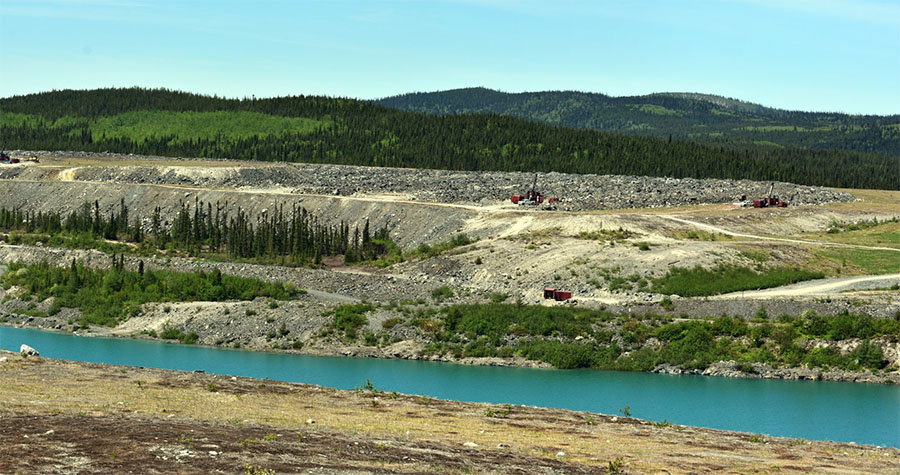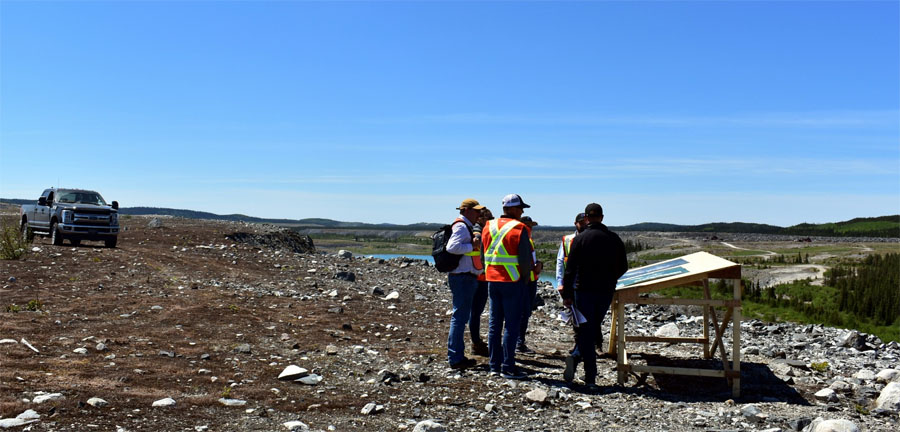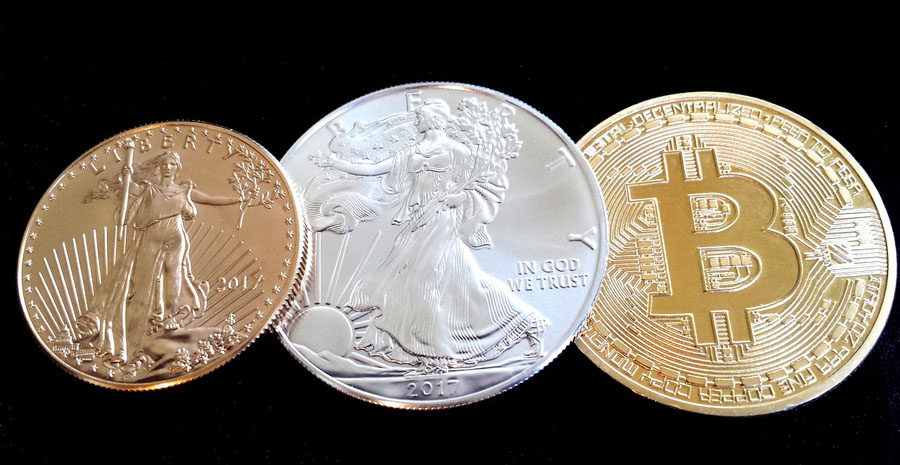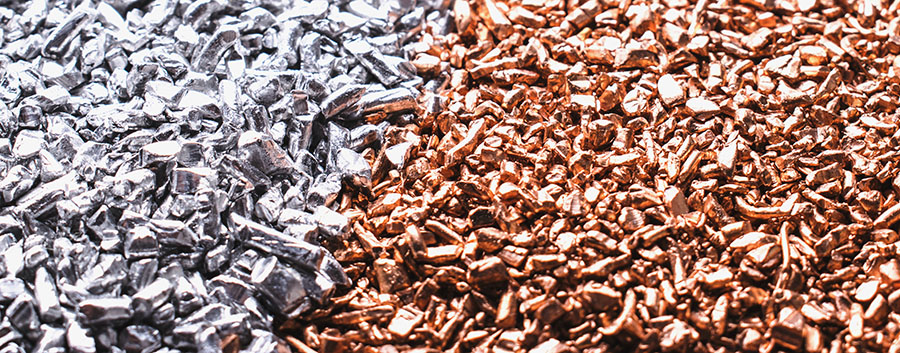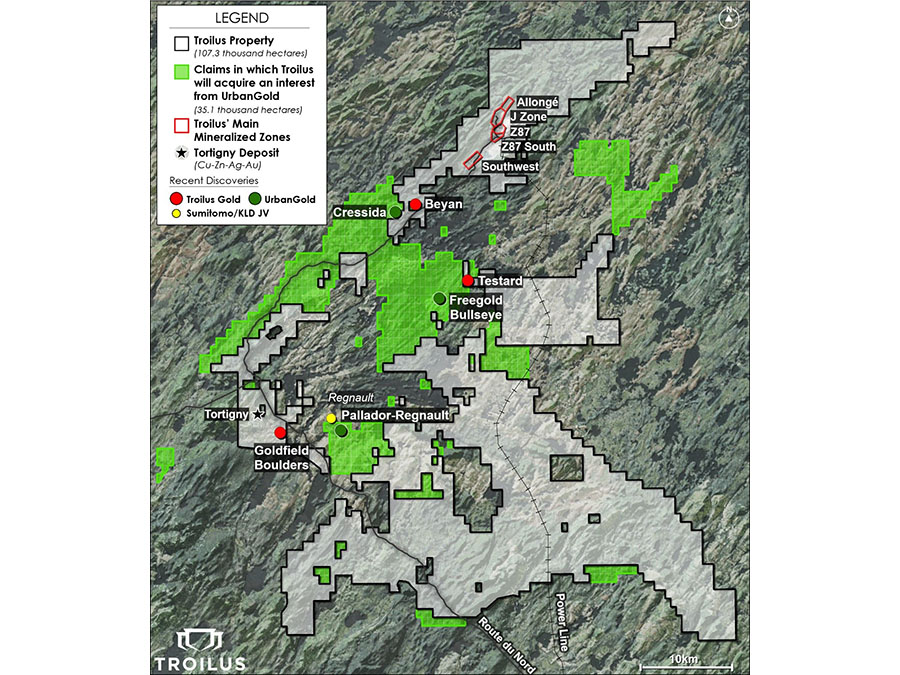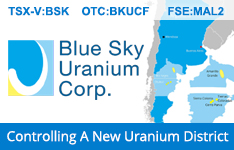You have to hand it to them, the timing of Golden Independence Mining Corp. (IGLD:CSE; GIDMF:OTCQB) announcing its maiden resource estimate (MRE) on its Independence project in Nevada is pretty good, as precious metals sentiment becomes increasingly more positive, and other assets like Bitcoin just seemed to have bowed out as a serious alternative, after getting into a tailspin of epic proportions, losing over 25% of value in one day. So far Frank Giustra seems to have won the gold vs. Bitcoin debate with Michael Saylor for now.
As the historical 1.07 million ounce (Moz) gold resource was proven up and expanded toward 1.48 Moz gold, the recent drill program can already be called a resounding success. The company is cashed up by a C$2.8 million financing closed in April of this year, so management isn't wasting any time and continues drilling, with the focus on further filling in and expanding the new resource, and incorporating as much as possible in a Preliminary Economic Assessment (PEA), scheduled for the end of Q4, 2021. Let's have a closer look at its latest achievement, as I have CEO Christos Doulis commenting further in a quick Q&A.
All pictures are company material, unless stated otherwise.
All currencies are in US Dollars, unless stated otherwise.
It seems a new Nevada explorer with a serious gold resource has emerged, right on time as gold seems to be continuing its upward trajectory on inflation fears, initiated in the summer of 2020. Golden Independence announced its NI43-101 maiden resource estimate on May 19, 2021, and it came in according to my expectations, or actually was even a bit better, as I expected 1.3–1.5 Moz Au eq. The final maiden resource figure coming in was an impressive 1.48 Moz Au, and including silver it becomes 1.61 Moz Au eq:

As management is focusing on an oxide open pit component, the near surface mineralization is the most important. More on this later. As the minimum threshold used for a heap leach operation is 500 koz Au, it is good to see that this amount has already been achieved by Measured and Indicated (M&I) resources alone. Of course there will be dilution, but a Preliminary Economic Assessment on Independence hardly has to resort to including Inferred resources, which increases risks. The gold grade seems low at first sight, but remember this is a future heap leach operation, which can be economic at very low grades, as low as even 0.11 grams per tonne (g/t) Au, and as high as 6 g/t Au, with a world average of 0.70 g/t Au. Operating mines like Fort Knox (Kinross) have reserve grades of 0.3 g/t Au, Mesquite (Equinox) of 0.44 g/t Au, Goldstrike (Nevada Gold Mines) of 0.50 g/t Au, so the grades of the Independence project are nothing out of the ordinary.
The average grade has dropped 14% since the historical resource estimate from 2010, as the cut off has been lowered to 0.20 g/t Au. The cut-off grade used in 2010 of 0.25 g/t AuEq was based on a much lower gold price of US$850/oz, and silver price of US$13/oz at the time. As a reminder, here is the 2010 historical resource estimate:

As can be seen, Golden Independence focused on the near surface M&I oxide part, as it has increased this by 156% (from 210 koz to 537 koz Au), with the high grade sulfides remaining exactly the same at 796.2 koz Au, at the same grade. I asked CEO Doulis how he got to this exact same number. He answered that they didn't drill any additional holes, but were allowed by the TSX to use the historical data. Usually historical data has to be verified by at least 10% verification drilling, so I wondered why this wasn't necessary this time, especially as the sulfides were such a large part of the resource. Doulis answered that the historical work had been sufficient to allow for the skarn to be qualified as an Inferred resource under NI 43-101 but that expanding or upgrading the skarn would require additional core drilling.
The resource estimate incorporates over 39,000 meters of reverse circulation (RC) and diamond drilling in 234 holes over the years, with the vast majority being RC drilling. Noranda Exploration was the first company to conduct serious diamond core drilling on the property. From 1985 to 1987 it completed 5,960 meters of HQ and NQ diameter core drilling in seven core holes to test the Independence Skarn Target. This skarn target hosts the current high grade underground sulfide resource.
So far for the basics, after this I proceeded with a number of sometimes critical questions for CEO Christos Doulis, in order to get as much information as possible.
The Critical Investor (TCI): The underground sulfide part has no silver at all in it, has this been assayed for silver?
Christos Doulis (CD): The UG skarn has no silver; there were no additional drill holes into the underground resource. The UG skarn is a different geological occurrence than those that generated the near surface oxide resource and is devoid of silver.
TCI: I take it the MRE didn't include any of the high grade oxides near super hole AGEI-32 yet? As a reminder, this hole returned 24.4m grading 9.11 g/t Au and 25.2 g/t Ag, all oxides.
CD: With only one hole in the high grade oxide zone, it had little impact on the resource; Phase 2 has just finished and had six holes in the area of AGEI-32; the results will be announced in June/July.

TCI: I'm looking forward to those results, as will investors. On another subject, why isn't the resource pit constrained? You don't need very extensive met work results, etc., just pick a cut-off, a conservative recovery and you can do a Whittle pit constrained. Or would you lose lots of ounces?
CD: The resource will be constrained once we move to a PEA and have a better handle on metallurgy, economics, etc. We will lose some ounces but not lots, we need oxide/transitional/sulfide differentiation before we run meaningful pits.
TCI: What could be the influence of defining a redox boundary, as mentioned in the news release in the notes to the resource estimate table?
CD: As we move to PEA and do more metallurgy, we will be able to define an oxide zone, a transitional zone and a sulfide zone of the near surface resource. This is tied into the PEA; our cut-off for transitional and sulfide will be higher than for oxide due to lower transitional and sulfide recoveries.
TCI: Why doing just RC drilling and no diamond drilling, which is the standard for juniors when advancing towards a resource and for sure towards economic studies, also before going to reserves when diamond drilling is mandatory?
CD: Diamond drilling is not required at our current stage; this is a bulk tonnage homogenous deposit and RC suffices for resource expansion. As we advance the project and upgrade to P&P [Proven and Probable] reserves, diamond drilling will become involved. If we drill the skarn it will be via diamond (core) drilling as well. The main reason is costs, we are at resource addition stage, not focused on moving to P&P now.
TCI: Why are you looking to go into production at 500 koz Au and prepare a PEA on this scenario, as markets (and suitors) predominantly focus on 1 Moz Au+ operations, 100 koz Au pa production profiles with bigger NPVs, especially with lots of high grade gold available underground at Independence, potentially making this a staged development project with the underground part financed internally by the open pit part?
CD: The project effectively has two separate components: near surface and underground. They should be developed sequentially; mine through the near surface heap leachable ore then go after the skarn, which sits several hundred meters below the bottom of an ultimate pit. These two deposits are two different creatures; a heap leach with a likely sub US$100M capex and a sulfide project with capex likely in the hundreds of millions of dollars. You really need to think of the project as being two separate operations or having two different operating phases. The skarn one would be multiples of size from a capex and potential production profile perspective compared to the near surface heap leach operation. I also note that the Phoenix pit, less than 1.5 miles away, is out of high grade skarn and is now mining low grade skarn and could potentially process material from our skarn deposit.
TCI: Is it meaningful to any degree to have Sprott Capital Partners for advisors? In many cases they are not the types to just hang around to provide standard advice for a cap raise here and there; they often see a bigger picture.
CD: Sprott did bring our two institutional investors in the $2.8M PP [private placement] to the table but is also a good advisor to have with the potential M&A aspect of the story.
TCI: What is the status of all remediation work?
CD: Our remediation work is basically done; we cleaned up one site. The BLM had no other issues with clean up on our project.
TCI: What is the status of the lawsuit?
CD: The lawsuit is slowly working its way forward. No other comment at this time.
TCI: What are the plans for future resource size and timing/schedule?
CD: Ideally another resource comes in late 2021 as part of the PEA and will incorporate results from Phase II drilling as well as any additional drill programs we undertaken during 2021. There will be a focus on HG delineation near hole AGEI-32.
TCI: Are you looking for an uplisting on the Venture, if so when? To me Golden Independence looks like a no brainer for institutional investors, but often they have no mandate for CSE stocks.
CD: My goal is to make this story more attractive to institutional investors by year-end so a TSXV listing is a definite possibility.
TCI: That would be a good thing as Golden Independence deserves to be in institutional portfolios in my view, especially if you can break the 2 Moz Au threshold.
This concludes the small Q & A with CEO Christos Doulis.
As a reminder, the earning in of the initial 51% interest by spending US$1.75 million of exploration expenditures by December 31, 2021, will be no problem at all; the company already spent US$2 million until now. An additional 24% interest can be earned by incurring another US$10 million of work expenditures over three years, which could include everything, from drilling to economic studies to permitting.
The company already commenced a 2,500-meter (8,000 ft) RC drill program, to test beyond the footwall of the oxide deposit (still within a potential open pit). As newly found mineralization could very well be included into the oxide resource, it could prove to be a real gamechanger regarding PEA economics in my view.
The following section shows the AGEI-32 intercept relative to the historical/known mineralization:

The average grade of AGEI-32 (24.4m grading 9.11 g/t Au) is truly world class for oxide gold, I can't recall I have ever seen such high grade oxides before. For now, I will update my calculations on the potential economics of the current resource.
With the resource numbers in now, a quick, revised back of the envelope calculation on the 500 koz oxide scenario for Golden Independence assumes a 60,000 oz Au for eight year production, based on an average grade of 0.5g/t Au eq, with recovery of 80% for gold, 50% for silver. Based on 350 producing days per annum, this requires a 12,000 tonne per day operation, which, when using an average capex/tpd ratio of US$8,000/tpd, generates a capex of US$96 million. Using an average AISC of US$1000/oz Au, and an average combined (federal and state) corporate tax of 25% for Nevada, this results in a very decent after-tax NPV5 of US$93 million @US$1500/oz Au, and an after-tax IRR of 27%. At a current market cap of C$14.6 million, this means the stock would be trading at just 12% of a hypothetical PEA NPV5, meaning a future hypothetical P/NAV in that case of 0.12, which is low compared to peers at similar stage. Let's have a quick look at the updated peer comparison:

With the most important column EV/oz for now:

It is amazing to see the increase in EV/oz metrics towards the production stage. And the table containing P/NAV, for future valuation potential when the PEA comes out hopefully at the end of Q4, 2021:

The P/NAV is a metric that usually converges to a 1.00 value when a project is going into commercial production, or even more, depending on profitability. Setting course towards a hypothetical P/NAV of 0.12 at the end of this year, as the PEA comes out, it will be clear that there is a lot of re-rating potential left for Golden Independence.
Conclusion
A first step of a 1.61 Moz Au eq maiden resource estimate for the Independence Gold project is nothing to ignore in my book, and will definitely help to put Golden Independence firmly on the radar of Nevada Gold Mines (NGM), which owns the Phoenix Mine complex literally a stone's throw away. The high grade sulfide skarn should also be something of interest for NGM, as Phoenix ran out of exactly the same type of ore and is mining low grade skarn at the moment.
At such point I always wonder why NGM didn't simply pick up the property itself, but Golden Independence beat them to it, so now NGM has a front row seat, and can pull the trigger whenever it wants, bolting the Independence project onto its own Phoenix operations whenever desired. For now Golden Independence is focusing on the high grade oxide discovery, looking to add as much high grade oxide ounces as possible, which in turn will not only expand the open pittable oxide resource, but also probably improve upcoming PEA economics at the end of this year.

I hope you will find this article interesting and useful, and will have further interest in my upcoming articles on mining. To never miss a thing, please subscribe to my free newsletter on my website www.criticalinvestor.eu, in order to get an email notice of my new articles soon after they are published.
The Critical Investor is a newsletter and comprehensive junior mining platform, providing analysis, blog and newsfeed and all sorts of information about junior mining. The editor is an avid and critical junior mining stock investor from The Netherlands, with an MSc background in construction/project management. Number cruncher at project economics, looking for high quality companies, mostly growth/turnaround/catalyst-driven to avoid too much dependence/influence of long-term commodity pricing/market sentiments, and often looking for long-term deep value. Getting burned in the past himself at junior mining investments by following overly positive sources that more often than not avoided to mention (hidden) risks or critical flaws, The Critical Investor learned his lesson well, and goes a few steps further ever since, providing a fresh, more in-depth, and critical vision on things, hence the name.
[NLINSERT]Disclaimer: The author is not a registered investment advisor, and currently has a long position in this stock. Independence Gold is a sponsoring company. All facts are to be checked by the reader. For more information go to www.goldenindependence.co and read the company's profile and official documents on www.sedar.com, also for important risk disclosures. This article is provided for information purposes only, and is not intended to be investment advice of any kind, and all readers are encouraged to do their own due diligence, and talk to their own licensed investment advisors prior to making any investment decisions.
Streetwise Reports Disclosure:
1) The Critical Investor's disclosures are listed above.
2) The following companies mentioned in the article are sponsors of Streetwise Reports: None. Click here for important disclosures about sponsor fees. The information provided above is for informational purposes only and is not a recommendation to buy or sell any security.
3) Statements and opinions expressed are the opinions of the author and not of Streetwise Reports or its officers. The author is wholly responsible for the validity of the statements. The author was not paid by Streetwise Reports for this article. Streetwise Reports was not paid by the author to publish or syndicate this article. Streetwise Reports requires contributing authors to disclose any shareholdings in, or economic relationships with, companies that they write about. Streetwise Reports relies upon the authors to accurately provide this information and Streetwise Reports has no means of verifying its accuracy.
4) The article does not constitute investment advice. Each reader is encouraged to consult with his or her individual financial professional and any action a reader takes as a result of information presented here is his or her own responsibility. By opening this page, each reader accepts and agrees to Streetwise Reports' terms of use and full legal disclaimer. This article is not a solicitation for investment. Streetwise Reports does not render general or specific investment advice and the information on Streetwise Reports should not be considered a recommendation to buy or sell any security. Streetwise Reports does not endorse or recommend the business, products, services or securities of any company mentioned on Streetwise Reports.
5) From time to time, Streetwise Reports LLC and its directors, officers, employees or members of their families, as well as persons interviewed for articles and interviews on the site, may have a long or short position in securities mentioned. Directors, officers, employees or members of their immediate families are prohibited from making purchases and/or sales of those securities in the open market or otherwise from the time of the decision to publish an article until three business days after the publication of the article. The foregoing prohibition does not apply to articles that in substance only restate previously published company releases.
Charts and graphics provided by the author.


